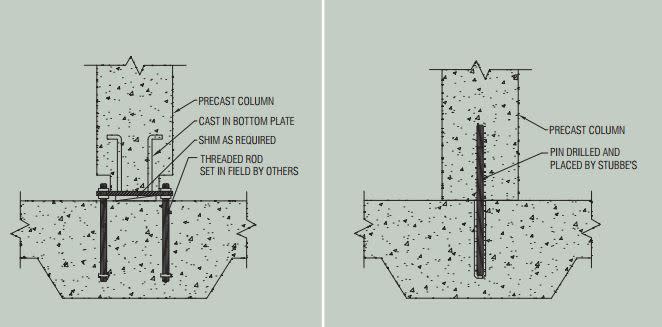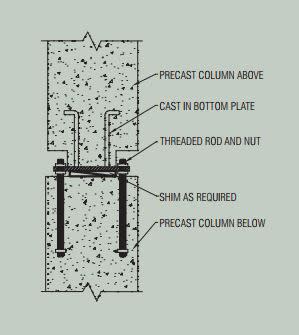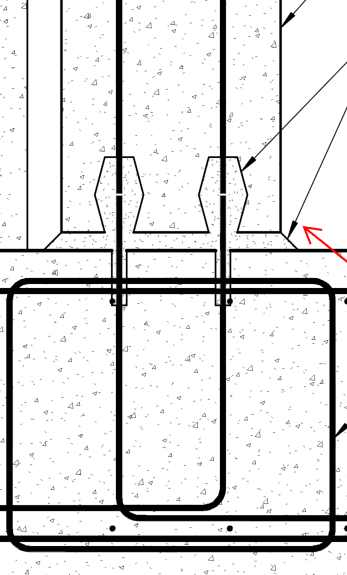KootK
Structural
- Oct 16, 2001
- 18,618
Normally, when I put a precast column on a CIP pilaster, I'll make the pilaster larger than the column by 3"-4" on all sides. That, to provide some tolerance and so that a standard four bolt precast base connection can be used without interference between the anchor bolts and the pilaster reinforcing. On a current project, I'm being asked to detail a precast base connection where the column and pilaster will have identical cross sectional dimensions. Is there a reasonable way to do that that is not cost prohibitive?
These are some options from a manufacturer's catalog for slightly different situations. One seems to show same sized precast columns successfully connected but I'm not sure if that would apply to a CIP pilaster. Also not sure how it was done.


I like to debate structural engineering theory -- a lot. If I challenge you on something, know that I'm doing so because I respect your opinion enough to either change it or adopt it.
These are some options from a manufacturer's catalog for slightly different situations. One seems to show same sized precast columns successfully connected but I'm not sure if that would apply to a CIP pilaster. Also not sure how it was done.


I like to debate structural engineering theory -- a lot. If I challenge you on something, know that I'm doing so because I respect your opinion enough to either change it or adopt it.

